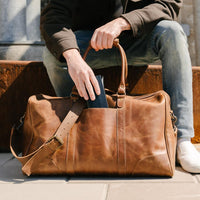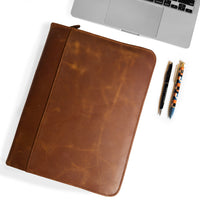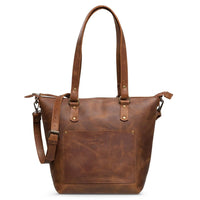But if you want to impress your folks and buds with your history knowledge, you might want to learn a thing or two about the origins of leather wallets. Their story is more interesting than you may realize.
The Ancient Birthplace of Leather Wallets
Before the world of bifolds, checkbook and RFID wallets, there were coin purses - the “OGs” of currency “holders”.
Depictions of coin purses appear on ancient Egyptian hieroglyphics, suggesting that they’ve been around for over 4,000 years.
Otzi the Iceman, a glacier mummy accidentally discovered in 1991, was found to have a coin purse attached to his hip. That would place the earliest known use of coin purses to at least 3,300 BCE, the date from which Otzi is believed to have walked this Earth.
Like many wallets today, the coin purse found on Otzi contained knives, flint and small bits of food. And the consensus from those who have seen his coin purse is that it was quite stylish!
Wallets Got Trendy in Ancient Greece and Rome
Coin purses turned into an everyday accessory for ancient Grecian and Roman citizens. Like Otzi the Iceman, inhabitants of ancient Greece and Rome wore coin purses at their hips or in the folds of their robes or togas.
They would carry jewels, small coins and paper notes much like how we carry coins, cards and receipts in our wallets today. The use of coin purses even appears in Greek mythology, where Hermes, god of trade and wealth, was fittingly depicted as carrying one.
Leather Wallets Assume Form
Despite the ancient beginnings of leather wallets, it wasn’t until the 1300s that they actually took a form we recognize today. And it took up until the 1600s for the flat wallet to take off, right around the time that paper currency began to circulate. During the Renaissance era, makers of wallets began experimenting creatively with different styles and makes. This resulted in a burst of wallet designs ranging from simple and straightforward to ornate and intricate. Many of the wallets at this time were still used to carry things like notes and food.
Leather Wallets During the Industrial Revolution
The year was 1834 and paper currency turned into a staple part of life. Around this time came flat case wallets, which were attached to citizens’ belts since it was considered inappropriate to keep them in one’s pockets. The cultural and social symbolism of wallets reached new heights around this time as well. For example, a thick wallet made a man seem more important and of higher status. Also, the wallet was seen as a middle-class staple - rich folk were less likely to carry them.
The Roaring 20s & the Modern Rebirth of Leather Wallets
The Roaring 20s, which brought economic prosperity, turned wallets into a symbol of American consumerist culture. Companies such as Hermes began creating modern wallets and leather ones became essential fashion accessories. Hermes began incorporating saddle leather into wallets for their colour and durability, and the aesthetic of their wallets soon attracted a large following.
WWII & the State of the Leather Wallets
The second World War took a hit on many industries including the fashion world. Nevertheless, leather wallet production carried on strong despite the shortages and rationing of textiles. In fact, soldiers carried wallets constructed with leather that was durable enough to last through the ravages of war. Some of these wallets have been found and preserved.
Leather Wallets in the Mid 20th Century to Present
After WWII, the global economy rebounded and so did the fashion industry. With cash and credit cards circulating heavily, leather wallets became even more omnipresent in the Americas and beyond. European influence took hold in North America as well, with Parisian-style wallets turning into a trendy item.
It was during the 1950s when leather wallet makers began taking note of fashionable attire, molding wallets that could coordinate with men and women’s clothing. Leathers got fancier, colours got bolder and new designs such as the bifold layout emerged.
But as quickly as wallets reached peak sophistication, their makers began shifting towards simplicity.
The 70s and 80s gave rise to simple wallets. Abrupt changes in material choices and shades of colour became popular. Options such as dark coloured wallets, as well as those containing nylon and velcro gained popularity right into the 90s. So did chained wallets (you probably had one) since they gave people a sense of security.
Leather Wallets in the 21st Century
Leather wallet manufacturers and brands have continued to evolve their creations both stylistically and functionally. Technology has played a major role in this. Now that more of us use virtual wallets, Google and Apple Pay and smartphones to make payments, wallets have taken different shapes.
The biggest change has been a downshift from large wallets to more minimalist ones. Why? Technology has allowed us to carry fewer cards and less cash than we used to before. We now keep wallets to carry just the essentials such as our driver’s licenses and medical cards and some emergency cash.
Nevertheless, many companies produce and sell leather wallets that capture the aesthetics of yesterday while serving up trendier designs. You can still find an abundance of bifolds, trifolds, classic leather and crocodile leather wallets and they’re aren’t going anywhere, anytime soon.
Now You Know Your Leather Wallet History
Now you know where leather wallets came from.
And if they come up in a discussion somehow, you can drop this knowledge to impress your friends and family.
You might even have more appreciation for the wallet as an accessory, considering how it has evolved through times both in prosperity and hardship.
If you’re looking for a classic or modern wallet, make sure to check out our selection here at Hides Canada. You’ll be sure to find one that suits your daily routine as well as your fashion sense!










